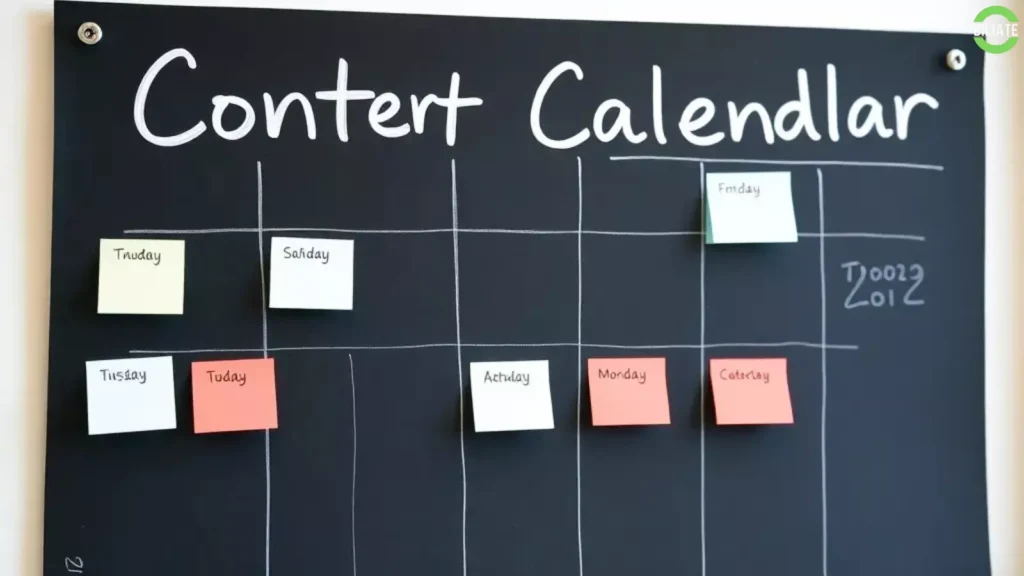Creating and sharing content is already a time-consuming process, but for creators and brands alike, navigating algorithm-driven visibility fluctuations adds an extra layer of complexity.
Every platform’s algorithm is constantly evolving, often making it difficult to ensure that your content reaches your audience.
This guide will walk you through strategies to help you manage content creation, streamline your scheduling, and maximize your visibility despite these fluctuations.

Why Algorithm-Driven Visibility
Social media platforms like Instagram, Facebook, and TikTok use algorithms to prioritize what users see in their feeds. While this is great for user experience, it can sometimes leave creators struggling to gain consistent visibility.
For instance:
- Posts that performed well in the past may no longer receive the same engagement.
- Visibility fluctuates depending on user interactions, which are influenced by timing, content type, and even trends.
Understanding these fluctuations is essential for crafting a reliable content creation and scheduling strategy. Let’s dive into practical tips to manage these challenges and keep your audience engaged.
1. Stay Updated on Algorithm Changes
Each platform frequently updates its algorithm to improve user experience, which can impact your content’s visibility. To stay ahead:
- Follow platform blogs and trusted news sources like Social Media Today or Hootsuite’s blog, which regularly cover algorithm updates.
- Join creator communities where you can exchange information and experiences with fellow creators about the latest algorithm changes. Facebook groups, Reddit communities, and forums can be particularly helpful.
- Experiment with your content periodically to see how adjustments in posting time, format, or hashtags affect your reach.
Interactive Tip: Consider setting up notifications or subscribing to newsletters from trusted social media analysis tools like Later or Buffer for real-time updates.
2. Plan Your Content Around Algorithm-Friendly Formats
Algorithms favor certain types of content based on platform goals and user preferences. Here’s a quick rundown of popular formats that currently work well:
- Instagram Reels and Stories: Instagram prioritizes Reels for discovery and Stories for retention. Use both formats to reach new followers and stay top-of-mind for existing ones.
- TikTok Videos: Short-form videos are favored, especially those that encourage engagement, like duets or trends.
- LinkedIn Articles and Polls: LinkedIn’s algorithm favors interactive content, so articles, polls, and thoughtful posts often perform well.
- Facebook Live and Groups: Facebook prioritizes content that encourages group interaction and live engagement, so go live or post interactive group content.
Incorporating these formats into your content strategy can help you maintain visibility even during periods of algorithmic fluctuation.
Interactive Tip: Experiment with different content formats and track engagement over time to see which resonates most with your audience.

3. Create a Content Calendar that Allows for Flexibility
A content calendar is essential for staying organized, but you’ll want to build in flexibility for last-minute adjustments:
- Use time-blocking to allocate specific slots for creating, editing, and posting content. If you notice a trend or an algorithm shift, you’ll have dedicated time to react quickly.
- Prioritize your evergreen content but leave space for reactive posts. This allows you to share timely content that aligns with trending topics or current events, which algorithms may favor.
- Batch your content ahead of time so you have a backlog to pull from during unexpected changes.
Interactive Tip: Try tools like Trello, Asana, or even Google Sheets to visually map out your content calendar. Color-code by platform or content type to see at a glance what’s ready to go live.
4. Use Scheduling Tools with Built-In Analytics
Scheduling tools save time and also offer insights into optimal posting times and engagement metrics. Look for tools that:
- Provide data-driven recommendations on when to post, based on historical performance.
- Allow for direct integration with platforms for quick adjustments. Tools like Buffer, Hootsuite, and Later can automatically adjust post times based on predicted engagement.
- Offer engagement metrics that highlight which posts performed best, helping you refine your content strategy further.
These tools enable you to publish during peak engagement windows, improving your chances of reaching a larger audience.
Interactive Tip: Set aside a weekly analytics review session to assess what’s working and adjust your scheduling strategy accordingly.
5. Diversify Your Content to Adapt to Algorithm Changes
Content diversity helps you stay visible across different parts of a platform. To ensure a varied feed:
- Mix up post formats—use videos, carousels, images, and text-only posts if the platform supports them. For example, you could create a mix of photo carousels and Reels on Instagram.
- Repurpose popular content to extend its life. For instance, transform a well-performing Instagram post into a TikTok video or a LinkedIn article. Each platform has a different audience, so repurposing can help you maximize visibility.
- Engage directly with your audience through comments, Q&A sessions, and polls. This encourages more interaction, which can boost your content in the algorithm.
Interactive Tip: Try creating a content bucket list, where you categorize content into types (e.g., educational, entertaining, inspirational). This ensures you’re regularly varying the content you post.
6. Optimize Your Content for Engagement
Platforms prioritize content that sparks engagement. To boost yours:
- Craft compelling captions and CTAs that encourage comments, shares, and likes. Questions, polls, and requests for opinions are easy ways to prompt engagement.
- Leverage hashtags and keywords relevant to your niche. Research popular hashtags that are specific to your audience, as they help more people discover your content.
- Encourage user-generated content (UGC) by prompting followers to tag you in their posts, share their experiences, or engage with challenges. UGC often performs well because it feels authentic and relatable.
Interactive Tip: Incorporate a call-to-action at the end of each post, such as “What are your thoughts?” or “Tag someone who needs to see this!” to drive engagement and boost visibility.
7. Monitor and Adjust Based on Performance Analytics
Consistently monitor your analytics to understand how each piece of content performs over time. Look for:
- Engagement metrics like comments, likes, and shares. If you notice a sudden drop or spike, investigate what may have caused it.
- Reach and impressions: This shows how many people saw your post and how often. Posts with a high reach often align with the current algorithm.
- Follower demographics and behavior: Understanding who your audience is and when they’re most active can inform your scheduling decisions.
Interactive Tip: Use this data to experiment with different posting times and content types, then track the results to optimize for future posts.

8. Don’t Rely on a Single Platform
Finally, diversifying your online presence can mitigate the risks of algorithm fluctuations. To broaden your reach:
- Maintain profiles on multiple platforms, like Instagram, TikTok, LinkedIn, and Twitter, depending on your niche.
- Cross-promote your content to drive traffic across platforms. For instance, you could share snippets from your Instagram content on TikTok to tap into both audiences.
- Leverage email marketing as a stable channel that’s unaffected by social media algorithms. Building an email list allows you to connect with your audience directly, on your terms.
Interactive Tip: Add social media links to your email signature, website, and other profiles to encourage followers to connect with you on multiple platforms.
Conclusion
Navigating algorithm-driven visibility fluctuations can feel daunting, but by staying informed, experimenting, and diversifying your approach, you can maintain a steady presence and keep your audience engaged.
Remember that consistency and adaptability are key; the more you understand and align with each platform’s preferences, the better you’ll be able to make algorithms work for you.
